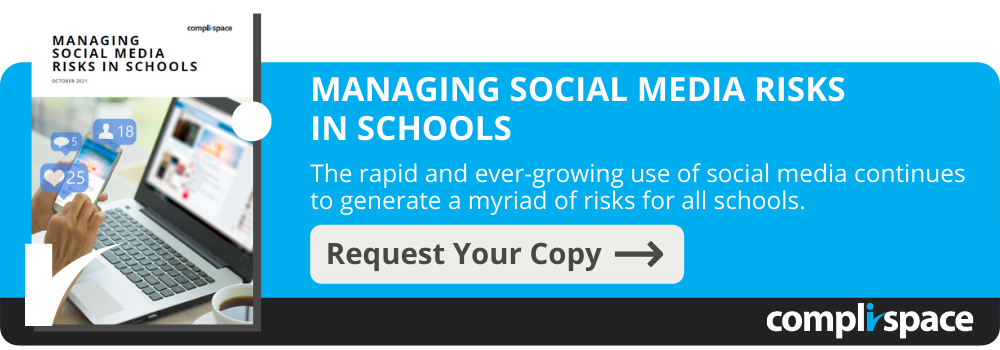Changes to the Fair Work Act in March this year gave rise to a new National Employment Standard (NES) which provides a mandated pathway for converting an eligible casual employee to a permanent employee.
A Bit of Background
Previously, ‘casual conversion’ only applied in certain Awards (such as the Educational Services (Schools) General Staff Award, but not the Teachers Award) and in some enterprise agreements, and usually related to an eligible casual employee having a right to request permanency after a certain period. If an employer did not wish to accept this request, then they could only reject the request on specified grounds, which were to be communicated in writing to the employee.
The NES adopts what was available in the Awards that contained casual conversion clauses except that, in addition, an employer is now required to offer conversion to a casual employee if they meet the eligibility requirements on their 12-month commencement of work anniversary, unless certain conditions apply.
The Fair Work Commission has now updated the provisions in those Awards that contained casual conversion clauses so that they are now consistent with the NES.
What Are the Changes?
Under the NES, a casual employee becomes eligible to be considered for permanency, whether initiated by an employee’s request or by an employer’s offer, if the employee:
- has been employed by the employer for 12 months
- has worked a regular pattern of hours on an ongoing basis for at least the previous six months
- could continue working these hours as a full-time or part-time employee without significant change
A casual employee is eligible to be considered for conversion to:
- full-time permanent employment if their regular pattern of hours for at least the previous six months has been the same as full-time hours; or
- part-time employment if their regular pattern of hours has been less than full-time.
A school may reject an employee’s request or decide not to offer permanency but only if this is on “reasonable grounds” which are “based on facts that are known or reasonably foreseeable”. Reasonable grounds include that:
- making the offer would not comply with a recruitment or selection process required by, or under, a Commonwealth, state or territory law
- the employer would have to make a significant adjustment to the employee’s work hours for them to be employed full-time or part-time; or
- in the next 12 months:
- the employee’s position won’t exist
- the employee’s hours of work will significantly reduce
- the employee’s days or times of work will significantly change, and that can’t be accommodated within the employee’s available days or times for work.
A school must respond in writing to an employee’s request within 21 days, or if not making an offer, give the relevant reason within 21 days of the casual employee’s 12-month commencement of work anniversary.
The NES also provides for limiting a casual employee’s entitlement to make further requests for permanency if rejected, and other procedural steps.
How Does Having an Enterprise Agreement Affect This?
Where a school has an Enterprise Agreement (EA), this becomes more complex. An NES overrides a provision in an EA to the extent that the EA provides a lesser entitlement than the NES. Typically, the EAs that contain casual conversion clauses entitle casual employees to request conversion to permanency after only 26 weeks, rather than the 12 months employment and six months of a regular pattern of work in the NES. As this appears to be more generous than the NES, the advice from the Fair Work Ombudsman is to seek legal advice to clarify a school’s obligations in relation to the application of the whole, or part of, the NES.
What Schools Should Have Done By Now
Firstly, all current and new casual employees must have been provided with a Casual Employment Information Statement from the Fair Work Ombudsman. This sets out the entitlements of conversion from casual to permanent employment. Like the requirement to provide new employees with the Fair Work Information Statement (which must also be provided to casual employees), failure to provide a casual employee with a Casual Employment Information Statement carries penalties for non-compliance.
Secondly, schools should have assessed the employment of all existing casual employees who were employed before 27 March 2021 and determined the length of their employment and whether they had worked a regular pattern of hours.
Employers were required to make the offer of permanency (or communicate why they were not making an offer of permanency) by 27 September 2021 to existing casual employees who had been:
- employed before 27 March 2021
- employed for 12 months
- had worked a regular pattern of hours on an ongoing basis for at least the last six months.
Employers were required to respond to any requests for permanency from casual employees made after 27 September 2021, within 21 days of the request being made, and either accept or respond in writing explaining why their request was being rejected.
Going Forward - What Schools Need to Do
- Ensure that all new casual employees (and any existing employees if accidentally missed) are provided with the Casual Employment Information Statement (CEIS) . While the CEIS does not need to be provided every time that the same casual employee commences an engagement with the school, it must be provided once every 12 months. To avoid memory or procedural lapses, it may be prudent just to provide the CEIS every time a casual employee commences an engagement with the school.
- Keep a running total of the employment periods of all casual employees and note the pattern of hours (whether regular or not). Set up a process to alert the school about each casual employee’s 12-month anniversary from the time that they were first employed by the school. This should be maintained even if a request or offer of permanency is rejected in the first instance.
- Consider and decide whether to offer permanency (or whether to accept the employee’s request) for employees who are about to reach the 12-month anniversary.
- Within 21 days of a casual employee’s 12-month anniversary, either make an offer of permanency or provide a written explanation for rejection, specifying the particular “reasonable grounds” for rejection that apply in that case. (Of course, a school is at liberty to also offer permanency at any other time.)
- If an eligible casual employee has made a written request for conversion to permanent employment, the school must then respond in writing within 21 days. If the response is in the negative, frame the written explanation to the employee specifying the particular “reasonable grounds” for rejection that apply in that case.
- Casual employees are able to make further requests for permanency every six months, or when they reach a particular eligibility criterion that they have not previously met (for example, when they have worked a regular pattern of hours for six months). The school must also respond to those requests in writing within 21 days, providing explanations if the request is rejected.
Record Keeping and Systems
It is evident that managing a school’s obligations in relation to casual conversion requires good record keeping and processes to trigger time-based actions such as offers (or not) of permanency.
To comply with the casual conversion requirements, schools must have a system in place to provide an alert when a casual employee is coming up to a 12-month anniversary of their initial engagement with the school. In addition, it is clear that schools must retain accurate records:
- of each casual employee’s patterns of working days and hours on an ongoing basis
- that the casual employee was provided with a Casual Employment Information Statement within the last 12 months.
Schools should also maintain records of:
- any requests made by an employee and the outcome of that request, such as a copy of the written response
- any offers made by the school and the employee’s response.
Author
Svetlana Pozydajew
Svetlana is a Principal Consultant (NFP) at CompliSpace. She has over 20 years of experience in strategic and operational human resource management, occupational health and safety, and design and implementation of policies and change management programs. She has held national people management responsibility positions in the public and private sectors. Svetlana holds a LLB, Masters in Management (MBA), Master of Arts in Journalism, and a Certificate in Governance for not-for-profits.




.png)
